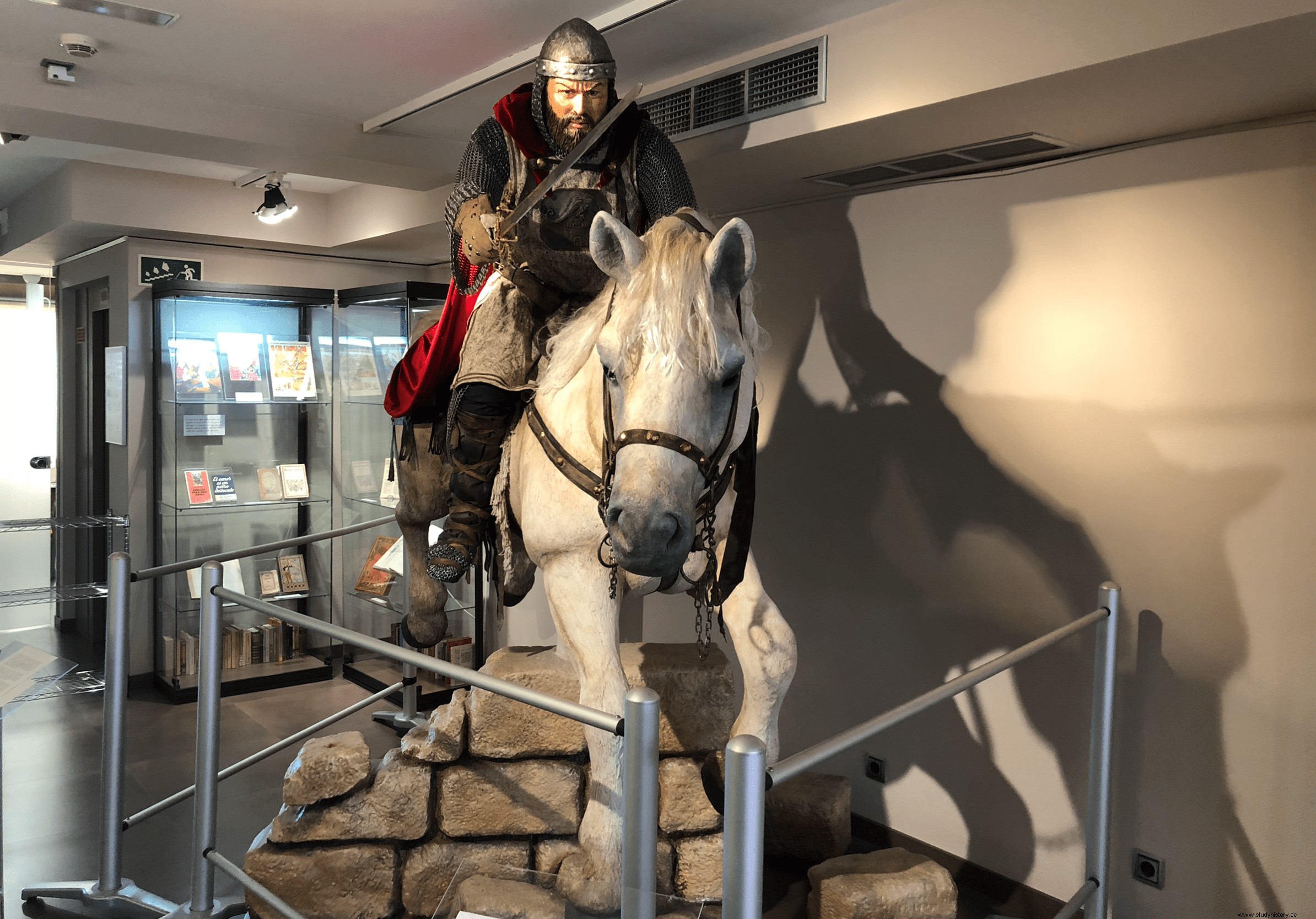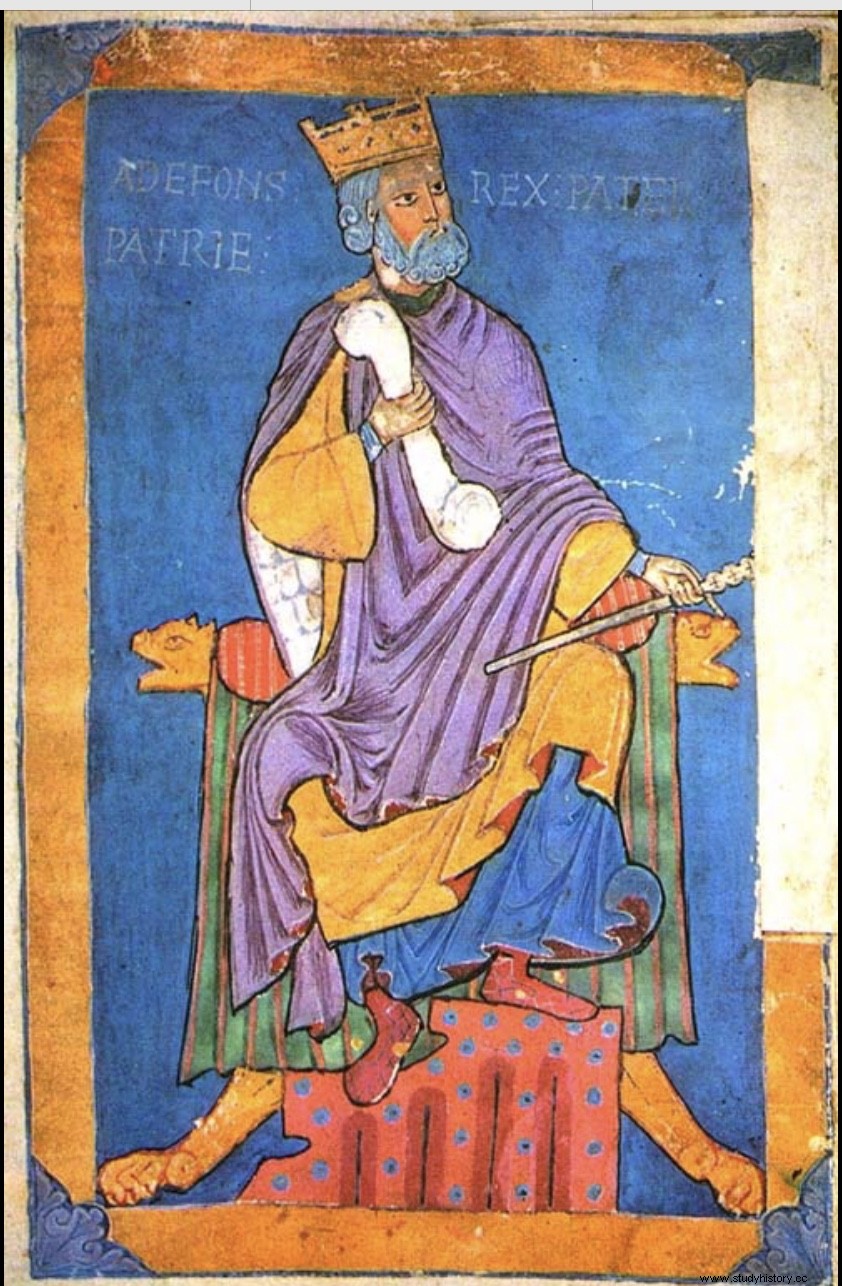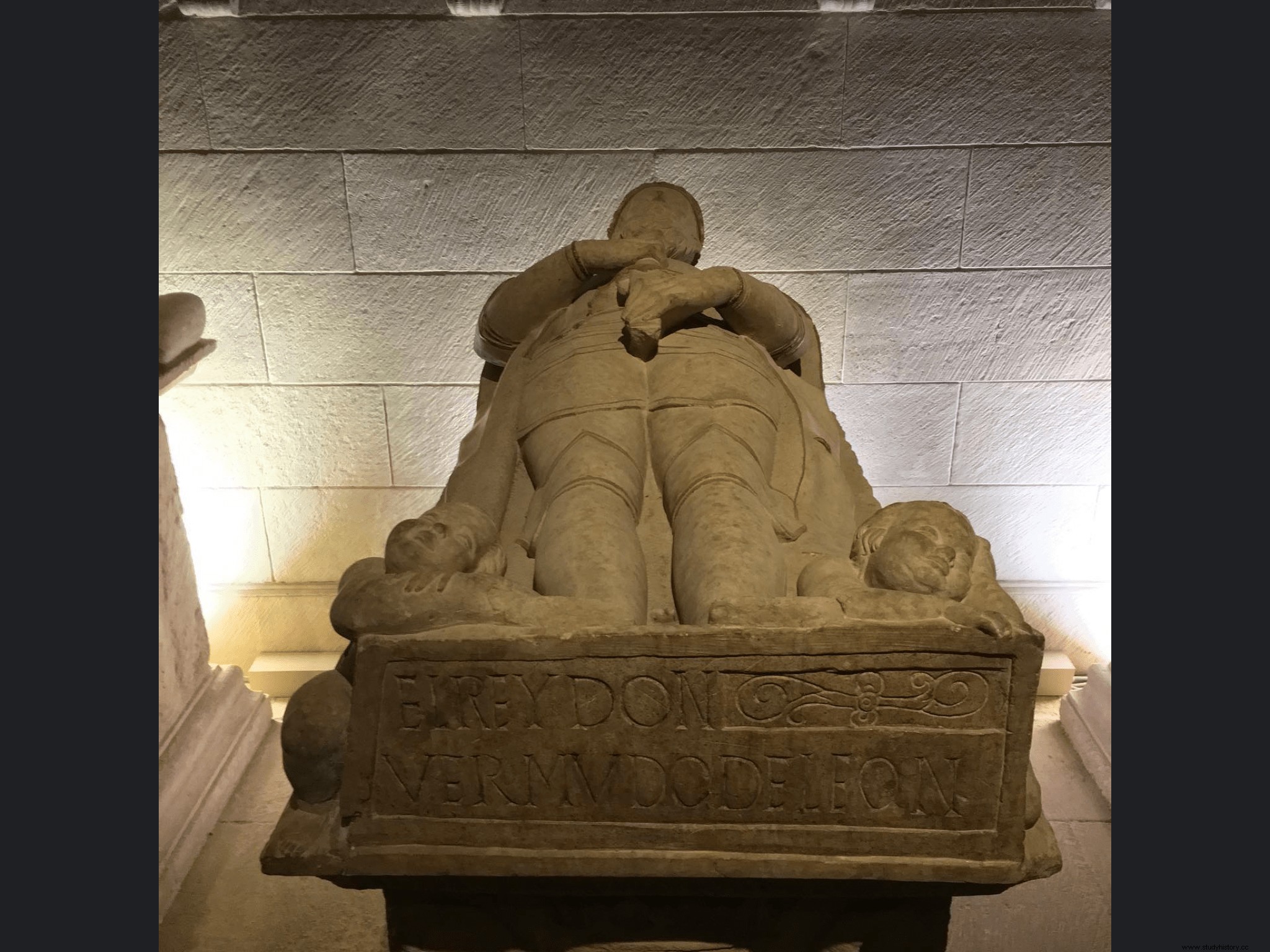We finished the first entry of this series on the first exile of the Cid in the moment before the imposition of said penalty by King Alfonso VI.
In the year 1081 the monarch launched a campaign against the Taifa of Toledo in support of his ally al-Qadir, dispossessed and evicted from the capital by the King of the Taifa of Badajoz. The logical thing is that in this campaign one of his main military leaders, Rodrigo Díaz, would have accompanied him. However, according to the Historia Roderici, the Castilian was ill at that time, which is why he was not part of the Leonese expedition against Toledo.
While this was taking place, a Muslim force entered Castilian lands and he even attacked the imposing fortress of Gormaz. After seizing a large booty, they returned to Toledo lands. Upon hearing this news, Rodrigo was furious and gathered his retinue to penetrate the kingdom of Toledo, catch the attackers and give them a lesson. This is how the Historia Roderici narrates what happened:“He entered the kingdom of Toledo spiritedly, looting and ravaging the Muslim lands; he captivated men and women in number of seven thousand and snatched from them all their riches and goods, returning with this booty to his house ».

This action by Rodrigo greatly annoyed Alfonso VI for various reasons. According to the Roderici History, it was the tycoons who accompanied him on his own campaign against the Taifa who complained, stating that the Burgos man's maneuver was aimed at all of them being killed by the Muslims in revenge for what El Cid had done. The main instigator would be García Ordóñez, who fell out with him after what happened in Cabra.
There are other possible causes that would justify the royal discontent. It may be that the monarch received complaints from al-Qadir for the damage suffered by his subjects or that he took into account that with his behavior Rodrigo had damaged the reputation of the king of Toledo before his subjects and put at risk the very foundation of the pariah system by attack a kingdom that paid the Leonese king to protect it, not to be attacked by one of its most prominent nobles. According to other authors, Alfonso could not allow the example to spread either, that is to say that other tycoons also decided to act on their own attacking border places to enrich themselves.
Whatever the reason, the truth is that Alfonso VI decided to punish Rodrigo Diaz to the penalty of exile. The most probable date for making this decision is the summer of 1081, bearing in mind that the forces of Alfonso VI approached Toledo in April of that year and that the king was already in Valdeón in June, which indicates that the campaign had ended. The most logical thing is that he did not deal with the Cid matter until after he returned from the campaign on Toledo.

The penalty of exile was one of the consequences of the bond of vassalage between the kings and their nobles. Any of them could break it, the king sending the subject out of his domain (eiecit eum de regno suo) and the vassal, fulfilling certain formalities, ending his bond and leaving his domain in search of another lord (unnatural).
The expulsion from the kingdom did not entail the loss of all the assets of the exiled, but it did entail the loss of the castles and lands that the king had granted him to provide him with income with which to fulfill his obligations as a vassal.
Martínez Diez reproduces the content of the Old Law in relation to the penalty of exile:
This is Castiella's Jurisdiction:That when the King expels a rich man from the land, he gives a thirty-day term per jurisdiction, and then nine days, and then a third day, and dével' give a horse; and all the rich men, who farm on the land, give him two horses... And when the Rich man begins to leave the land, let the King give him a guide for his land and give him food for his money, and not gela must become more expensive than how long it was before it was thrown out of the earth. And the king should not do any harm to them in his companies or in his somethings, which are on the land... And the owners, his women, should not receive dishonor or any harm.
Rodrigo did not go into exile alone, since the laws stipulated that his own vassals should accompany him, who had to help him obtain the necessary sustenance for everyone in the new domains to which he arrived (which essentially meant finding a new lord to offer his sword in exchange for a soldier), and his servants. The historical sources do not offer details about the number or identity of the people who accompanied the Cid when he was exiled.
A different question was that related to the family (wife and children) of the exiled. It did not seem convenient to subject them to the harsh regimen of life (camps and military campaigns) that awaited their husband or father, and the usual thing was to seek the protection of a noble family member or some religious institution.
Here we must rule out once again the story of El Cantar de Mio Cid, not only because of its fictional nature, but also because when he states that Jimena and her daughters took refuge in the monastery of San Pedro de Cardeña, he is not even able to guess the name of the abbot who directed it at that time.
Following Martínez Diez again, it seems that it is most likely that Jimena availed herself of the protection of one of her brothers, the Count of Asturias Rodrigo Díaz or his other brother Fernando Díaz. This seems to be confirmed by a diploma (not without doubts about its veracity) awarded in Oviedo on August 13, 1083.
For his part, Rodrigo left (according to the Roderici History) first to Barcelona where he offered his services to the two counts who governed the city and who were named Ramón Berenguer II and Berenguer Ramón II, who began a campaign against Denia, but no agreement was reached between the two parties, which led the Cid to go to Zaragoza, where he remained until an episode known as The Betrayal of Rueda, which occurred between 1082 and 1083, caused him to meet his lord again.
Next to the Jalón River and about 30 kilometers from Zaragoza was the imposing fortress of Rueda, which served as both residence of the kings in times of difficulty in the capital as in prison. Precisely at the same time as the Almenar campaign, al-Muzaffar, the brother of the king of the Taifa of Zaragoza, and former king of Lleida, was held captive there. This, along with the warden of the fortress, named Albofalac, decided to start a rebellion against his brother and asked Alfonso VI for help.
In September 1082, the king of León sent an army under the command of his cousin , the infante Ramiro de Navarra, who was accompanied by several of the main Castilian magnates. After the Christians arrived in Rueda and discussed with the rebels, it was agreed to request the personal presence of Alfonso VI, who arrived in the second half of December and camped outside the fortress.
We do not know how the situation could have evolved, but al-Muzaffar's death turned the picture upside down. Albofacar decided to change his plans and, to avoid reprisals from al-Mutamin and ingratiate himself with him, plotted to betray the Christians by planning the assassination of his king. He sent messengers to Alfonso to appear in Rueda and personally take possession of the fortress.

On Three Kings' Day 1083, when enough men of the King of León's force had entered the castle but Alfonso was still outside, the trap hatched by the warden was revealed and the Muslims massacred a good number of magnates Christians. Among the casualties were the infantes Ramiro and Sancho de Navarra (cousins of the Leonese monarch), Count Gonzalo Salvadórez and the noblemen Vermudo Gutiérrez and the brothers Munio and Vela Téllez. Alfonso was forced to order the withdrawal of the rest of his host without being able to retaliate against the mayor for the slaughter of his relatives and his nobles.
El Cid received the news of what had happened in Rueda and immediately set out to offer Alfonso VI any help he might need. The two met and, according to Martínez Diez, the monarch offered him forgiveness for his exile sentence and ordered him to return to Castile with him. For several days they rode together, but the king's attitude towards him must have aroused misgivings in Rodrigo who finally decided to separate his path from Alfonso's and return to Zaragoza where King al-Mutamin received him with open arms.
The difference with the previous departure of the Cid from Castile, Martínez Diez points out, is that now he did not do so as condemned to exile, which had been forgiven him, but as a nobleman who had voluntarily decided to separate from his lord, towards whom he did not he had renewed his oath of vassalage, and had offered his services to another. That personal link with Alfonso would not be renewed until three years later.
We can only speculate on the reason why Rodrigo decided to take this step. The comparison between the uncertain future in Castile predicted by Alfonso's attitude towards him and the bright outlook that awaited him in Zaragoza, where he had the full support of al-Mutamin, who had entrusted him with the mission of militarily defending his kingdom, must have had an influence. and offered to pay him handsomely for his services. It is also possible that Alfonso himself did not dislike this decision by the Cid at all, since the taifa of Zaragoza could act as a brake against the Aragonese or Catalan claims over Castile.
The fact that the Campeador did not arrive indeed to return to Castile, but rather the fact that he returned to Zaragoza after meeting the Leonese monarch leads other sources to maintain that a pardon of the banishment from Burgos did not take place at that time, but rather that this remission took place after the battle de Sagrajas (1086) after which Rodrigo did return to his kingdom in the year 1087.
In any case, it would not be the last time that the differences between El Cid and Alfonso VI would culminate in Rodrigo Díaz being sentenced to death. banishment... but that's another story.
